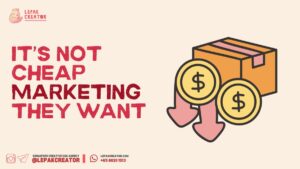In today’s world, online advertising is a way to convey targeted marketing messages using the web. Through this approach, marketers can educate, inform, persuade, and remind their target audience about their products and services. For this reason, marketers must determine their objectives, identify their consumers, and choose the right channels. Paid social media ads and search engine marketing are examples of online advertising. A brief overview of strategies that businesses can utilize to connect with their target audiences is included in this article, in addition to highlighting the pros and cons of online advertising.
Online Advertising: Advantages & Disadvantages?
The prevalence of Online Advertising is attributed to the growing time consumers spend on the Internet, despite marketers encountering certain challenges. A significant merit of Online Advertising lies in its cost-effectiveness, surpassing traditional advertising media. This medium empowers business owners to disseminate pertinent, personalized, and timely content to their audience at a fraction of the cost. Even with limited budgets, business owners can reach a substantial audience, maximizing the impact of their marketing expenditure.
In contrast to traditional advertising media, Online Advertising offers the advantage of close monitoring, enabling marketers to observe user interactions with their brands and understand the interests of both current and potential consumers. Online analytic tools play a crucial role in assessing ad effectiveness, providing insights for optimizing future campaigns. Beyond tracking, it presents valuable data on the ideal consumer profile, enabling marketers to refine their targeting strategies for optimal results.
However, the affordability of Online Advertising can be a double-edged sword, leading to one of its major drawbacks—easy dismissal. Many users actively block online ads or simply ignore them, causing a decline in ad clicks. Furthermore, a lack of trust in online ads, often associated with scams and viruses, compounds the issue. With users having control over which advertising messages they engage with, online ads face a higher likelihood of being overlooked compared to traditional advertising.
Errors in Online Advertising can prove expensive, given its complexity and the need for substantial knowledge and skill to achieve success. Consequently, it is not uncommon for businesses to make mistakes. Simply selecting the wrong keywords or employing ineffective targeting can result in significant expenditures without translating into leads or sales. Staying current with Online Advertising trends is crucial to discern what strategies yield positive outcomes and which ones do not. This continual learning process is essential for minimizing mistakes and optimizing the effectiveness of online marketing efforts.
Business Advertising Strategies Online
Pay-Per-Click (PPC) Advertising
This type of Online Advertising incurs costs for marketers based on the number of clicks their ads receive. Marketers bid on the perceived value of a click, considering factors such as keywords, platforms, and audience type. This method is versatile and serves various campaign goals, including lead generation, sales increase, and brand promotion.
Relevance is key in this approach, as users actively search for specific products, services, or information. Successful Pay-Per-Click (PPC) campaigns hinge on maintaining relevance, achieved through strategic targeting settings and a well-organized account structure.
Search Engine Marketing (SEM)
SEM involves promoting a business through paid advertisements featured on search engine results pages. The cornerstone of SEM lies in keywords. As users input keywords during search queries to locate desired information, it’s evident that keywords are integral to SEM as an advertising strategy. SEM’s notable strength lies in providing advertisers the chance to present their ads to motivated customers who are prepared to make a purchase at the precise moment they are ready. This effectiveness makes SEM a powerful and unique tool for business growth that surpasses the capabilities of other advertising mediums.
Social Media Marketing (SMM)
SMM involves crafting customized content for each social media platform to enhance engagement and market one’s business. This marketing strategy encompasses various activities, including sharing text and image updates, videos, and other content to stimulate audience interaction, alongside paid social media advertising. Utilizing paid social media advertising is an exceptionally cost-effective method to broaden your reach, fostering engagements, clicks, and views. This approach provides flexibility in selecting the budget, schedule, and target audience. With strategic planning, it becomes possible to showcase your content and offerings to a substantial audience at a remarkably low cost.

Leverage the right ads to achieve your goals
Social Media Marketing (SMM) entails tailoring content for each social media platform to boost engagement and promote a business. This strategy includes sharing text and image updates, videos, and other content to encourage audience interaction, complemented by paid social media advertising. Leveraging paid social media advertising proves highly cost-effective for expanding reach, encouraging engagements, clicks, and views. The approach offers flexibility in choosing budget, schedule, and target audience. Strategic planning enables the presentation of content and offerings to a sizable audience at an impressively low cost.
(Credits: Pexels)
👉🏻 Look out for the latest Marketing & related Tips @lepakcreator Telegram Channel!
Since you’re here, why not Read:




